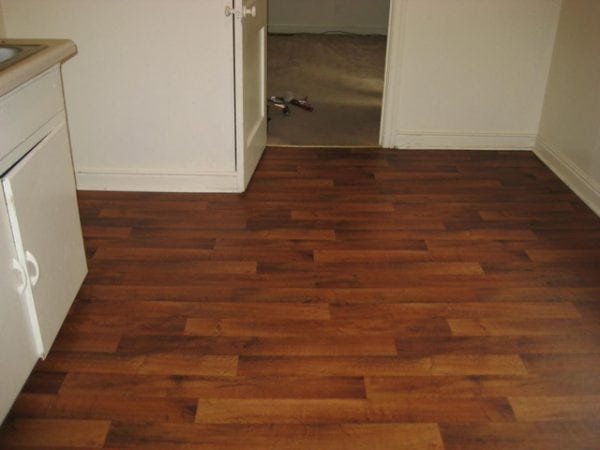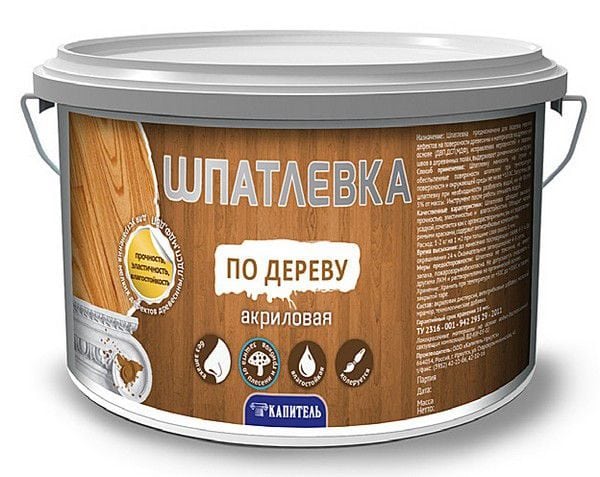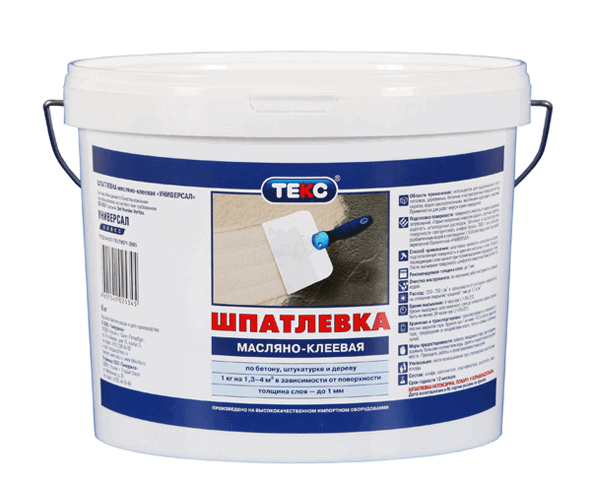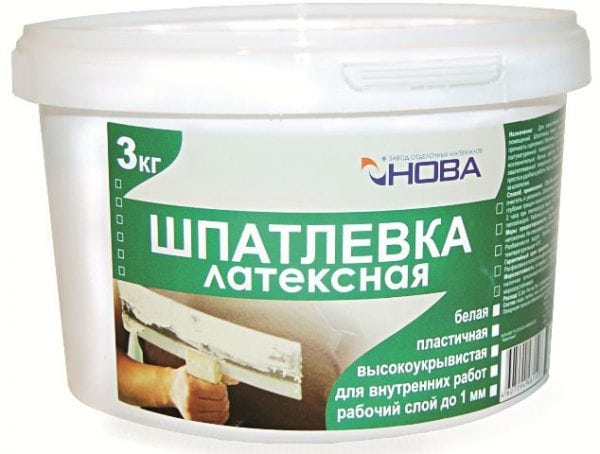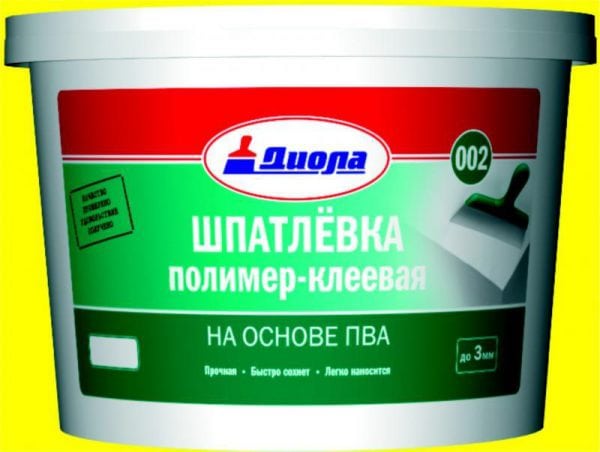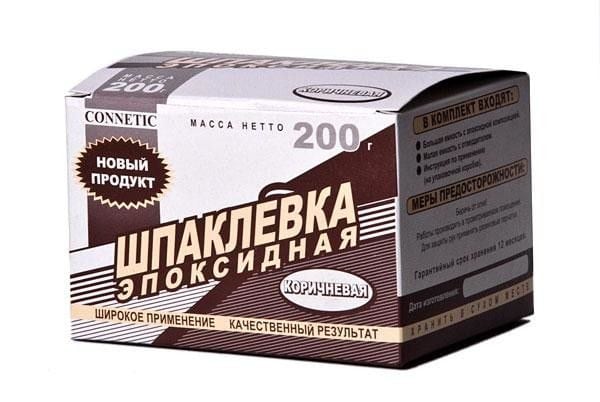Puttying the floor under linoleum is a necessary and important procedure. Without it, the finish will last less and will quickly lose its appearance during operation. To carry out the work correctly, you need to adhere to a certain procedure, and also be able to choose the right material.
- Features of working with linoleum
- Varieties of putties
- Wood putties
- Oil Based Compounds
- Quick drying formulations
- Polymer Compounds
- Glue and oil-glue compositions
- Putties on concrete
- Preparing plywood for puttying
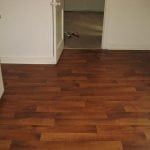
Features of working with linoleum
This type of finish is demanding on the quality of the subfloor. The floor should be smooth, without humps, cavities, cracks, sinks. If you lay linoleum on an unprepared base, it will soon begin to wear out, tear in places of obvious bulges - its service life will noticeably decrease. To avoid this, puttying the floor is used, and then a special layer is laid under the finish coating.
Fixing irregularities is possible only on a fairly decent quality basis, with a small difference in level and a small number of errors. If bumps and pits are found at every step, you will first have to fill in a self-leveling concrete screed and only after that proceed with laying linoleum.
to contents ↑Varieties of putties
The material should be selected based on the type of rough base. Usually it is concrete, or wood, or concrete, leveled with sheets of plywood. The joints between them will also have to be putty. In addition to specific compounds intended for one type of floor, there are universal ones that can work both on wood and concrete.
Wood putties
The compositions are used not only for leveling the floors before laying linoleum, but also for restoring the old wooden surface. They are also used to improve the appearance of the floorboard. Hard putty on wood is able to ideally close cracks, seams, fallen knots and other errors on a wooden surface.
Features of the composition for indoor work:
- Elasticity. This parameter is necessary because the tree is able to expand and contract depending on the ambient temperature. If the putty is not elastic, then soon it will just fall off.
- Homogeneity (the smallest fraction). Coarse-grained compounds cannot be used on wood. When grinding, scratches may occur, which also have to be puttied.
- High adhesion. The composition should ideally adhere to the tree, otherwise the putty will quickly begin to exfoliate and fall out.
- Ecological cleanliness. This parameter is important because the presence of harmful volatile substances in the composition can harm human health when it dries.
- High antiseptic properties. For wooden floors, covered with linoleum on top, it is very important that mold does not settle on them and the rotting process does not start in the event of accidental leakage of water through the finish coating.
- Fire safety. An important but optional parameter.
Oil Based Compounds
Oil putties include drying oil, fillers, water, coloring pigments, plasticizers and other components. Such compounds are considered ideal for wood, as they have natural ingredients. The advantages of oil putties include:
- high ductility;
- high adhesion to wooden surfaces;
- moderate consumption (no more than 1 kg / m2);
- ease of use;
- rather quick drying;
- environmental safety;
- relative cheapness.
Unlike most other putty mixtures, leveling oil compositions go on sale in a ready-made condition. They do not need preliminary mixing before applying to the surface to be treated.
Despite the mass of advantages, quite serious disadvantages are also characteristic of the material. Hard putty can quickly “fall out” of cracks and potholes if it experiences an intense load on the floor. Oil-based formulations are sensitive to excess moisture and do not adhere well to any paint other than oil. Therefore, before working with plywood or wooden floors, you will have to clean them from any finish to the tree itself.
to contents ↑Quick drying formulations
Nitro putties are made on the basis of wood dust (flour), have a wide variety of colors, and dry very quickly. Among the advantages:
- excellent adhesion to wooden substrates;
- perfect repair of defects;
- an opportunity to process a wooden surface (to clean, polish);
- dry for a maximum of 10 minutes;
- ordinary acetone or nitro solvent is suitable as a solvent.
Polymer Compounds
They are made on the basis of gypsum or latex. Gypsum putty for plywood for linoleum is quite suitable for sealing joints between sheets, as well as for perfecting wooden floors, which will then be covered with a similar topcoat.
Latex putties are an excellent, high-quality option. Only with them you need to be able to work. After setting, it is almost impossible to do anything with the surface. Therefore, it is necessary to immediately close the cracks and potholes perfectly perfectly evenly, without leaving errors.
The advantages of latex over gypsum are obvious:
- does not crumble;
- does not crack because it is elastic;
- Millimeter cracks are possible.
Among the disadvantages, one can note the price - it is hardly worth using latex putty under linoleum (although if the result is important, it will be the best) - and the inability to work at low temperatures.
to contents ↑Glue and oil-glue compositions
Usually they are cooked on their own. It turns out economically and fairly high quality. Putty recipe for wood (it is also suitable for sealing joints of plywood):
- 280 g of linseed oil;
- 60 g of turpentine oil, or turpentine;
- 30 g perlite in powder form;
- 20 g of casein;
- 20 g of edible gelatin;
- 12 g borax;
- 18 g of ammonia (18% solution);
- about 300 g of water.
Combine turpentine and linseed oil, add perlite powder. Mix everything, pour in water, introduce the remaining components and put in a water bath, heat up to about + 90 ° C. This will help to achieve the most uniform consistency and get a thick paste. Remove it from the heat and cool. You can work with it for an hour, then its properties will deteriorate.
The recipe for purely adhesive putty is simpler:
- Only chalk and PVA glue will be required.
- Take the chalk and slowly begin to pour glue into it. Break lumps immediately.
- Add glue until the mass looks like thick sour cream or pasta.
- Introduce wood flour or fine sawdust into the finished mass. Leave them to swell, and then get to work.
The qualities of such putty are quite high, the price is more than affordable. Of the minuses - a long drying time, at least a day, in addition, the thickness of the layer plays an important role.
In the last recipe, you can replace the PVA glue with a water-soluble, inexpensive varnish. Leave the compound overnight so that sawdust or wood flour swells. The resulting putty dries faster, and therefore is more attractive in work.
to contents ↑Putties on concrete
There are 7 varieties of compositions: based on cement or gypsum, lime, oil, varnish, adhesive, acrylic. Unlike wood, it is easier to work with concrete, the main thing is not to forget after thorough cleaning to impregnate it with a deep penetration primer with the addition of sand. This will improve the adhesion of the putty to the base and prevent it from flying out during the application of mechanical loads.
Gypsum has obvious advantages - it does not shrink and is inexpensive. Cement gives a decent shrinkage, but can be used in rooms of any humidity, unlike gypsum, which does not like water. Acrylic putty does not shrink, is moisture resistant, but costs more than gypsum.
The most attractive is the epoxy putty for concrete. It practically does not exfoliate from the base, is waterproof, strengthens the edges of potholes, and fills even small cracks well.
to contents ↑Preparing plywood for puttying
If everything is clear with the preparation of the concrete surface: to clean, to expand all the cracks and pits, then to remove dust, primer, dry and you can begin to putty, then with a wooden floor, and even more with plywood, everything is much more complicated.
The first thing to do is to impregnate such a floor with drying oil. It must be warmed up to +50 - 60 ° С and applied with a brush (roller). Forcefully dry the treated surface with a building hair dryer at + 200 ° C. You need to do the processing many times, each time drying the layer well. After 3 or 4 impregnations, drip water onto the surface of the plywood. If it is collected in drops, the treatment can be completed; if it is absorbed, it is necessary to proliferate it several more times. Do not forget about the edges, otherwise with the penetration of moisture they will be disheveled and then exfoliate.
A similar water-repellent effect can be obtained by impregnating plywood with PVA glue.
Before laying linoleum, be sure to putty all the bumps. And it doesn’t matter which floor you have - wooden or concrete. The main thing is to make it almost perfectly even, then lay the substrate and lay linoleum on top.

